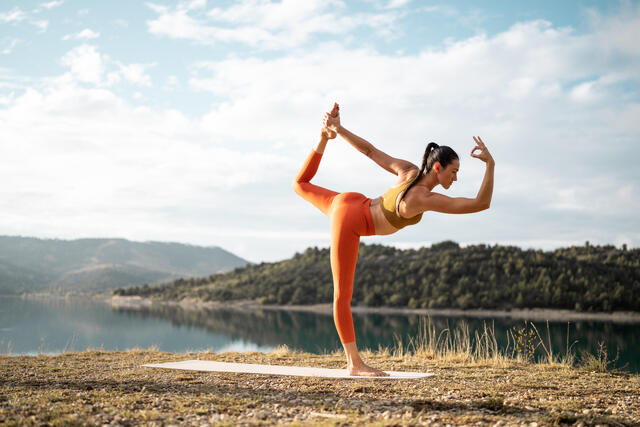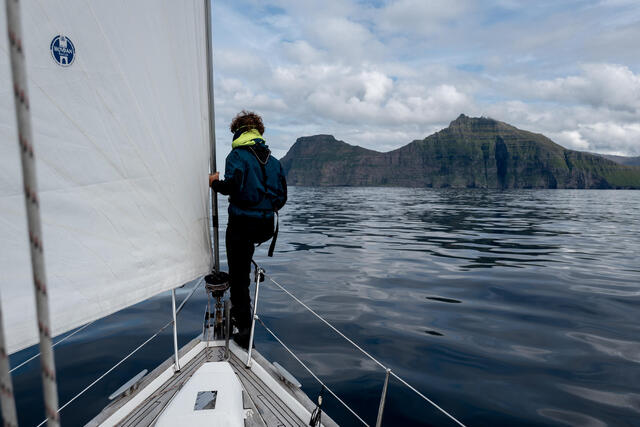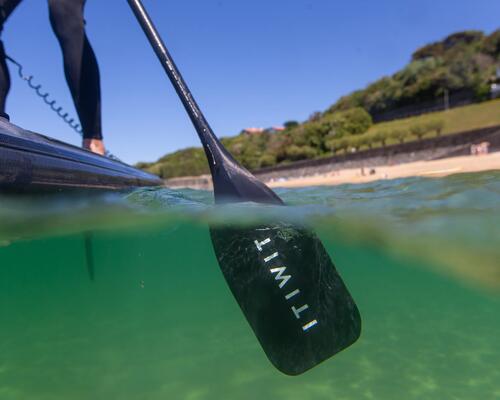What type of kayak is best for me?
As we've seen, both inflatable and rigid kayaks have advantages and disadvantages. What type you go for depends on several factors, including your skill level, budget, and the amount of storage space you have available. Here are a few more things to take into account before choosing your model:
Stability: If you're a beginner, you'll want to choose a slightly wider model that offers good stability. Stable kayaks in flat water are often unstable in rough water, and vice versa, so this is an essential factor when looking for sea kayaks. There are two areas of stability to consider: primary stability (which indicates the kayak's stability when resting in flat waters) and secondary stability (whether a kayak can remain stable when tipped on its side). A sea kayak must have good secondary stability as you're more likely to encounter rough water.
Hull shape: The hull shape indicates the type of cross-section the craft will have - this also affects the kayak's stability. A V-shape hull is the most recommended shape for sea kayaking because it easily adapts to waves and strong currents - providing great secondary stability. The round hull shape improves primary stability in flat water but is not recommended for the sea.
Weight: You need to consider the kayak's weight, as this will make a difference in how easy or difficult it will be to transport and carry into the water. Also, the more a kayak weighs, the deeper it will sit in the water, which will generally slow down your paddling. A lighter kayak will sit higher up out of the water and glide more effortlessly, allowing you to go faster, though this could make the kayak less stable in rough water. Your weight is also something to consider, so check the specs of the kayak to see the maximum weight it can carry safely.
Location: Sea kayaking is a great opportunity to take in some fantastic views and spot all sorts of wildlife. But certain waters and coastlines come with different challenges, so you must consider this when choosing a sea kayak. Some examples include wind direction and strength, currents, boat traffic and fewer opportunities for shore access (so the kayak you choose will need to be able to carry you and all your gear).
Deck volume: When choosing a kayak, you need to ensure you have enough space for your legs to fit comfortably and any kit you may need. You don't want to feel too squeezed into your kayak, especially if you're going out for a full day of fun on the water.
Manoeuvrability: The length of the kayak will determine how easy or difficult it will be to manoeuvre. Longer kayaks are designed to track straighter and offer more straight-line speed but can be challenging to manoeuvre quickly. Shorter kayaks can make tight turns and move around rocks or obstacles more easily.
Overall, inflatable kayaks offer more benefits than rigid kayaks. They're easier to store and transport and more convenient to maintain. They're tough, durable, and generally more stable than rigid kayaks, making them great for beginners. However, inflatable kayaks must be inflated and deflated each time they are used.
It's also recommended that if you paddle in rough water, you should always wear a buoyancy aid as your chances of tipping over are much greater. And if you're kayaking in cooler waters, you can look the part and stay warm with a kayaking wetsuit.

























